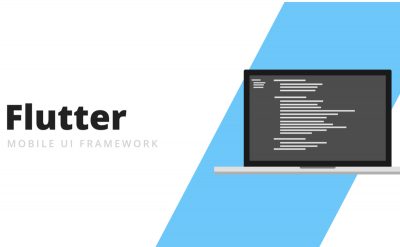Application in an enterprise environment move from ideation to development to deployment to management and then the most important part of retirement. Application lifecycle management is a critical aspect when it comes to enterprise mobility, where security and critical business operation are of prime importance. When it comes to enterprises mobility and application management, right solutions processes must ensure that internal applications are effective throughout the entire lifecycle. Application lifecycle management will monitor the health of application throughout its applicability but will retire as the technology becomes obsolete based on the requirements. As the enterprises realize the importance of the application lifecycle management and the market for these solutions expands.
Here are six best practices that every enterprise must follow:
1. Define workflow
Throughout the lifecycle of an application, the enterprises need to maintain a smooth workflow that depends on the state of the application. The need for mapping out the complete workflow that will include two basic factors operational requirement and software for development. The need for being specific when designing a complete workflow will assist the enterprises in maintaining how the different application lifecycle management processes work during each of the lifecycle stages. This roadmap of the workflow should include details about the need for coordinating different teams and making the best of communication. If the enterprises are able to define the workflows before the application development starts, it will be easier for the team to define goals as the processes move forward and maintain the schedule.
2. Consider end-user
Before developing applications, users should keep in mind the various aspects of user experience and infrastructure requirements. A good mobility solution will avoid overwork on the development part of the application when the need arises. There are various stakeholders that affect the application development and lifecycle flow, making them a complete part of the development process, it includes the leaders particularly, and C-level executives who are will be working on the application. The application should meet the critical requirements of all the stakeholders, making the business operation more channelized. It includes a critical aspect to test the applications by the users and fully understanding how the application will be impacting the daily tasks of users. Having a consideration for the end user will make the process flow development much easier for the application scenario.
3. Having a Quality Assurance
A productive application lifecycle management process should be focused on minimizing the errors in development and end-user flow. Quality Assurance is imperative because it shapes the lifecycle management of the application. Even if the enterprise is focused just on the DevOps that is the case for 99 percent of teams, but if you want to build an agile cycle for development, there should be greater emphasis on enhancing the Quality of application. A complete process of application development will incorporate QA and make sure that it’s used heavily during the lifecycle. The tools that are used during the lifecycle management they should offer a complete feature that can be used even during the QA testing. To make a complete application functional during the lifecycle when it starts from deployment to retirement, the tools should be able to track the QA testing for different functions.
4. Automation will be the solution
Manually deploying the application can be incredibly inefficient and could be risky. Manual-based processes in deployment usually cause errors affecting the complete process. Manual development and deployment is a poor use of resources and wastage of time for the employees that could be utilized for much more important things. For this process, enterprises should turn towards tools that can automate testing, deployment, and other phases of lifecycle management. Robotic Process Automation (RPA) has proven to be one of the most important tools when we see application testing and deployment.
5. Governance and Compliance
Governance and compliance are an imperative part of application lifecycle management. Governance over at the complete development lifecycle of management ensures that the application satisfies all the criteria’s. A failure to provide a governance team to the process of application development can be detrimental for the entire enterprise. All management tools should be capable enough and have the ability to handle governance over different levels along with all the requirements that come in. Having automated regulatory compliance reports means that the enterprises will be effective enough to ensure that the application follows all the set standards. All enterprises should adhere to all the compliance responsibilities with strictly to satisfy, that also assist in keeping track of the requirements and incorporating the compliance reporting in the procedure and solutions that can ease the process.
6. Getting the right tools
Managing the applications throughout the lifecycle is challenging and complicated. In addition to having the right individuals and processes, enterprises are all set to select the best tools that can be used in all phases. However, not all the tools are exactly the same that is imperative for capabilities to include real-time collaboration, long term planning, testing, Machine learning, and DevOps, the tools should be flexible and customizable.
Conclusion
Application lifecycle management should include different stakeholders scenarios that might come into play, tools that will enable the production and deployment and team that observes over the compliance part. The ideation process can be rough, but when the team decides to develop a workflow for the complete process, it must include all the possible situations. Throughout the last decade, application development is meant to be agile, making it another big challenge for the IT teams to maintain the complete process flow, as the remote worker contribution will differ. A well-planned application lifecycle management will assist the teams to have a knowledge transfer during the application shift.
To know more, download the latest whitepapers on application management solutions.














